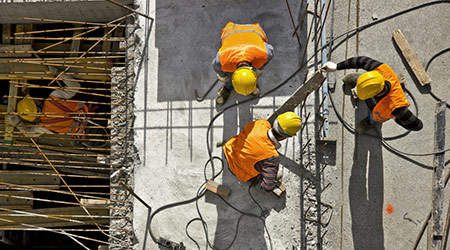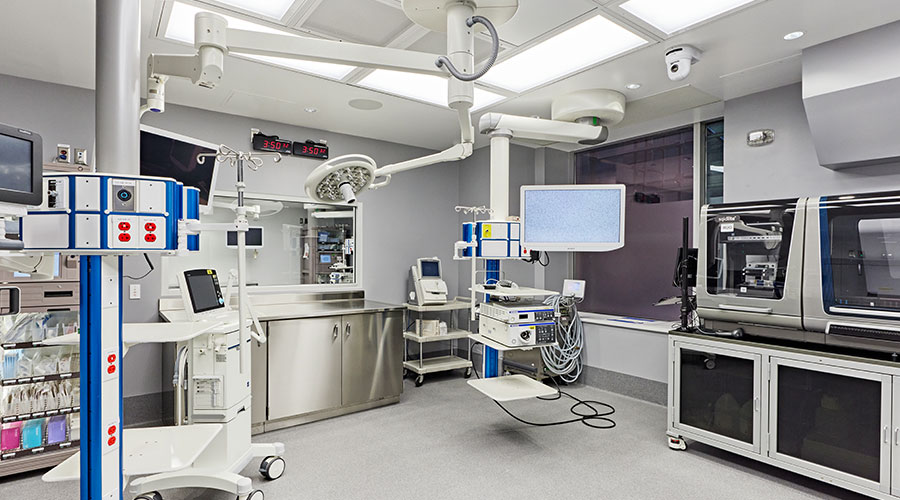Just as healthcare professionals must remain nimble in light of new medical research, healthcare facilities, too, must keep pace with rapid changes in code compliance, neighborhood health, sustainability and energy management. Code compliance is particularly crucial during new construction. If a new facility doesn’t meet compliance on a foundational level, the steps to correct the issue could be detrimental to the timeline and budget of the project – not to mention the safety of the workers.
To mitigate concerns and ensure a smooth project, compliance teams and planning, design, and construction teams should work together throughout the life of a project.
Pre-construction assessment
The pre-construction assessment is key to any project. During the pre-construction assessment, all teams will examine the potential environmental health, safety, and security issues of the project and determine corresponding mitigation processes in case any issues do arise.
One important component of the pre-construction risk assessment process is ICRA, or the infection control risk assessment. A fully integrated pre-construction assessment process means planning, design, and construction teams are not only looking at the project from an infection control perspective, but also a physical safety perspective. All the potential risks are examined at the beginning of a project to protect lives during and long after construction.
Assess the assessments
Staying on budget and on schedule is every project’s goal. However, the guiding light in every healthcare facility construction project should be safety and compliance. Building and design teams as well as the safety team should assess their work continuously throughout the project.
To further mitigate concerns, it is not out of the question for an internal team to assess the planning, design, construction, and safety teams’ assessments. It may feel extreme, but it is no different than internal assessments on facilities’ operations and regulatory teams. The last roadblock needed in a new facilities construction project is a third party that may not have the facilities’ best interests in mind. For example, if a third party comes in and shares that there is a major compliance issue such as improper humidity control measures in a newly constructed operating room and is charging hundreds of thousands of dollars to reseal the rooms, an internal assessment could reveal that the error was simply a process error such as a thermostat needing reprogramming that was an easy – and inexpensive – internal problem to correct.
Self-identify and correct immediately
A compliance issue during construction won’t always be detrimental, but if work stoppage is necessary to correct that issue, the project could be severely impacted. An internal team should be performing continuous assessments to remedy issues while the project continues to move forward. However, if a compliance agency discovers an issue during their external assessment, work stoppage is almost guaranteed. The stoppage could be as little as 24 hours – or as long as it takes to correct the issue. When discovered internally, cost could be minimal. But if an external agency discovers an issue and halts construction, it could cost hundreds of thousands of dollars to fix.
Final thoughts
Just as patient and workforce safety is imperative once a facility opens, the safety of construction workers and managers during the life of a project is equally important to opening a safe facility. While it may seem overly cautious to continuously assess every team throughout the construction process, the benefits of smoothly correcting compliance issues during construction, rather than risking an over-schedule and over-budget process, will allow your facility to begin on the right foot.
Larry Lacombe is the Vice President of Program Development and Facilities Compliance at Medxcel.

 Building an Organ Regeneration Lab at UHN's Toronto General Hospital
Building an Organ Regeneration Lab at UHN's Toronto General Hospital Oracle Health Hit by Data Breach, Patient Data Possibly Compromised
Oracle Health Hit by Data Breach, Patient Data Possibly Compromised Ground Broken on New MD Anderson Sugar Land Facility
Ground Broken on New MD Anderson Sugar Land Facility Florida State University Reveals Plans for Panama City Beach Hospital
Florida State University Reveals Plans for Panama City Beach Hospital The Effect of Over-Cleaning on Human Health
The Effect of Over-Cleaning on Human Health